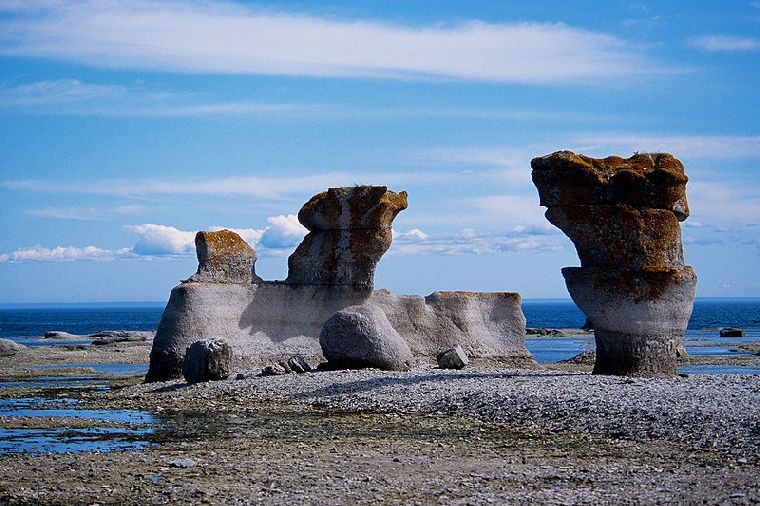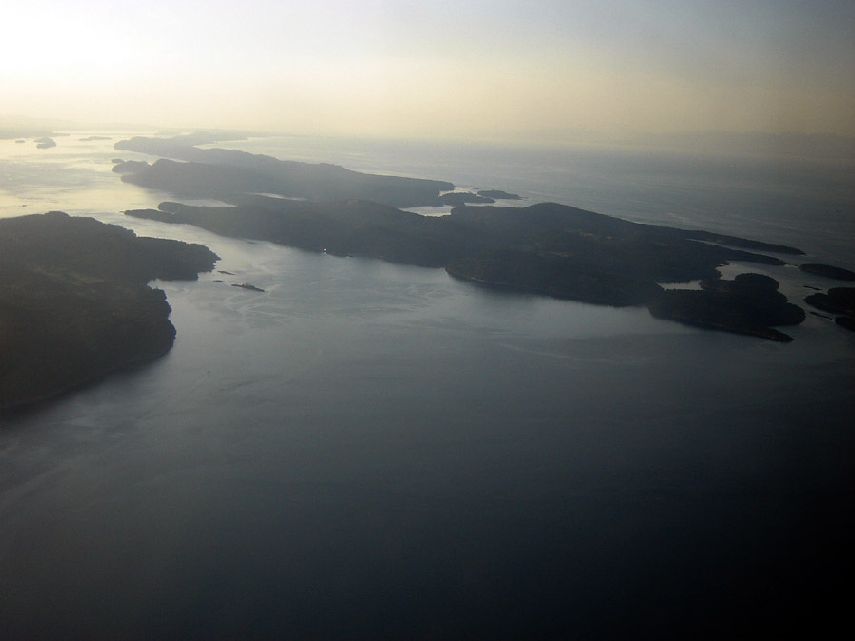Peggy’s Cove and Shelburne
Peggy’s Cove
The graceful Peggy’s Cove Lighthouse stands atop wave-worn granite rocks and is one of the most photographed sights in Canada, a symbol of Nova Scotia’s enduring bond with the sea. The village, with its colorful houses clinging to the rocks, and small harbor lined with weathered piers and fish sheds, has certainly earned its reputation as one of the province’s most picturesque fishing villages.
This is a delightful place to stroll through, but visitors may want to avoid midday in summer, when the number of tour buses can be a distraction. Early morning and late afternoon are the most peaceful times. Just outside the village is a memorial to the victims of the 1998 Swissair crash.
The village was also the home of well-known marine artist and sculptor, William E. deGarthe (1907–83). Just above the harbor, the deGarthe Gallery has a permanent exhibition of 65 of his best-known paintings and sculptures. Right outside the gallery, the Memorial is a 30-m (90-ft) sculpture created by deGar the as his monument to Nova Scotian Fishermen. Carved into an outcropping of native granite rock, the sculpture depicts 32 fishermen, and their wives and children. The large angel in the sculpture is the original Peggy, sole survivor of a terrible 19thcentury shipwreck, for whom the village was named.
Shelburne
A quiet historic town nestled on the shore of a deep harbor, Shelburne was founded hastily by 3,000 United Empire Loyalists fleeing persecution after the American Revolution in 1775. More loyalists followed over the next few years, and Shelburne’s population swelled to 16,000, making it at the time the largest town in British North America. Many of these settlers were wealthy merchants who were unprepared for the rigors of living in a primitive land. Over time, many relocated to Halifax or returned to England, leaving behind the fine 18th-century homes they had built.
Today, a walk along Water Street leads past some of the town’s most attractive historic homes to the Dory Shop Museum. This two-storey structure has been a commercial dory (flat-bottomed) boat building shop since its founding in 1880. During the days of the Grand Banks schooner fleet, Shelburne dories were famous for their strength and seaworthiness, and the town boasted seven shops that built thousands of boats each year.
The museum’s first floor features displays on the industry and the salt-cod fishery.
Upstairs, skilled shipwrights demonstrate the techniques of dory building that have changed little in a century.
Attractions:
Dory Shop Museum
Dock St.
(902) 875 3219.

















Canada Cities